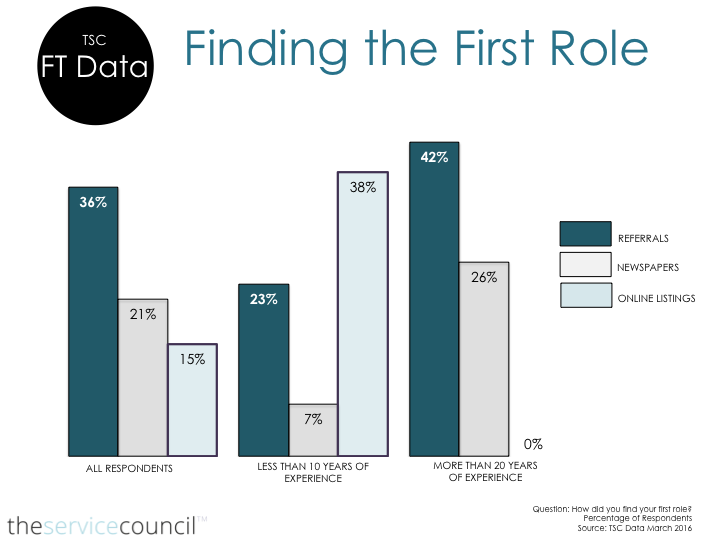Introduction to the Research
Our research allows us to get a peek into the initiatives of broader service organizations. In this process of discovery and analysis, the area of field service is one where we spend a lot of time and energy. Personally, I have been covering the space for the past 10 years, digging into technology trends as well as the best practices of businesses looking to get more out of their field technician workforces.
As of 12 months ago, we at The Service Council (TSC), identified a major opportunity for us to enhance our field service coverage. While we were getting the point-of-view from the head of field service or field operations, we weren’t hearing directly from the front lines of field service. We weren’t sufficiently covering the specialists, or engineers, or professionals, or technicians out in the field installing, fixing, repairing, maintaining, and delivering. Given the increasing focus on service and field service talent, it made sense to study the thoughts and minds of the folks who make up the field service workforce.
In 2015 we hosted a technician (my term of choice from this point forward) only webcast where we featured a panel of field technicians from Vivint and BioTek Instruments sharing their thoughts on the industry and their day-to-day lives. The panel opened our eyes to the need to dig deeper into the profession to learn more. In the pursuit of more information, I reached out to several organizations to allow me to go on ride-alongs with their field agents to truly gauge and assess a day-in-the-life. These experiences were game changing and I welcome the opportunity to do several more.
About the Research
All of this has culminated in our first ever research project aimed directly at field technicians. The project was made up of 2 surveys, the first of which investigated how field technicians got into the profession of field service and analyzed their likes and dislikes. The second looked to understand field technician thoughts on the current and future technology tools.
The response from our community has been outstanding. We have had 50 technicians respond to the profession survey and over 105 take part in the technology survey. Over the course of the coming week, I will document some of the key takeaways via our blog.
Field Technician Notes Part 1: Getting In to Field Service
Of the technicians we polled, 39% had been in the profession for more than 20 years and 70% had been in the profession for more than 10 years. During their time in field service nearly 50% had stuck with 1 organization throughout their entire careers. Of the group with 20+ years of experience, 53% had stayed loyal to their first field service organization.
Most technicians, more than 60%, got into field service during their professional lives. Only 28% indicated that they chose to get into field service during their time in high school or college. This is vital, especially as the field service community looks to raise awareness to the profession via association and partnership with technical colleges. The interest in field service work must start at the college or education level if organizations are to navigate the looming talent crisis from a retiring workforce. Of those in the profession for more than 20 years, 36% indicated that they chose to get into field service while in high school or college, a number down to 13% for those who have been in the profession for less than 5 years.
Other interesting data points on getting into field service:
- 45% indicated that field service was their primary choice of profession
- 35% chose field service because they liked fixing things and the profession provided them the opportunity to do so for work
- 8% chose field service because it was the best paying job or only work available at the time
Referrals served as the primary means to land a field service role, as reported by 36% of technicians. As expected, newspaper ads were more popular and effective for those in the industry for more than 20 years. For those with less than 5 years of time in field service, online listings have become quite popular.

In seeking their most recent role, 26% of technicians relied on referrals, the largest representation followed by online search, newspaper ads, and placement agencies. Less than 10% were placed via career services at their colleges or technical schools. Once again, this is an incredible area of opportunity to seed the development of tomorrow’s field service workforce. A number of large institutions are working collaboratively with local colleges and technical institutions to raise awareness to the field, but there is more that can and should be done.
Over the course of the next week, I’ll be posting more results.
Mar 24 – Improving a Day in the Life
Mar 25 – Likes and Dislikes with Field Service
Mar 28 – Thoughts on Mobile technology
Mar 30 – Emerging Technology (IoT, Augmented Reality)
Apr 1 – Summary and Next Steps
Our 2015 webinar is available as part of the TSC webcast archive here. (Members only)
On March 8, I presented early findings from our current crop of technician surveys. (Recording available to all here)
Summary data and our first ever technician report will be published on Mar 31. If interested in getting the report and results, please submit your information here.
